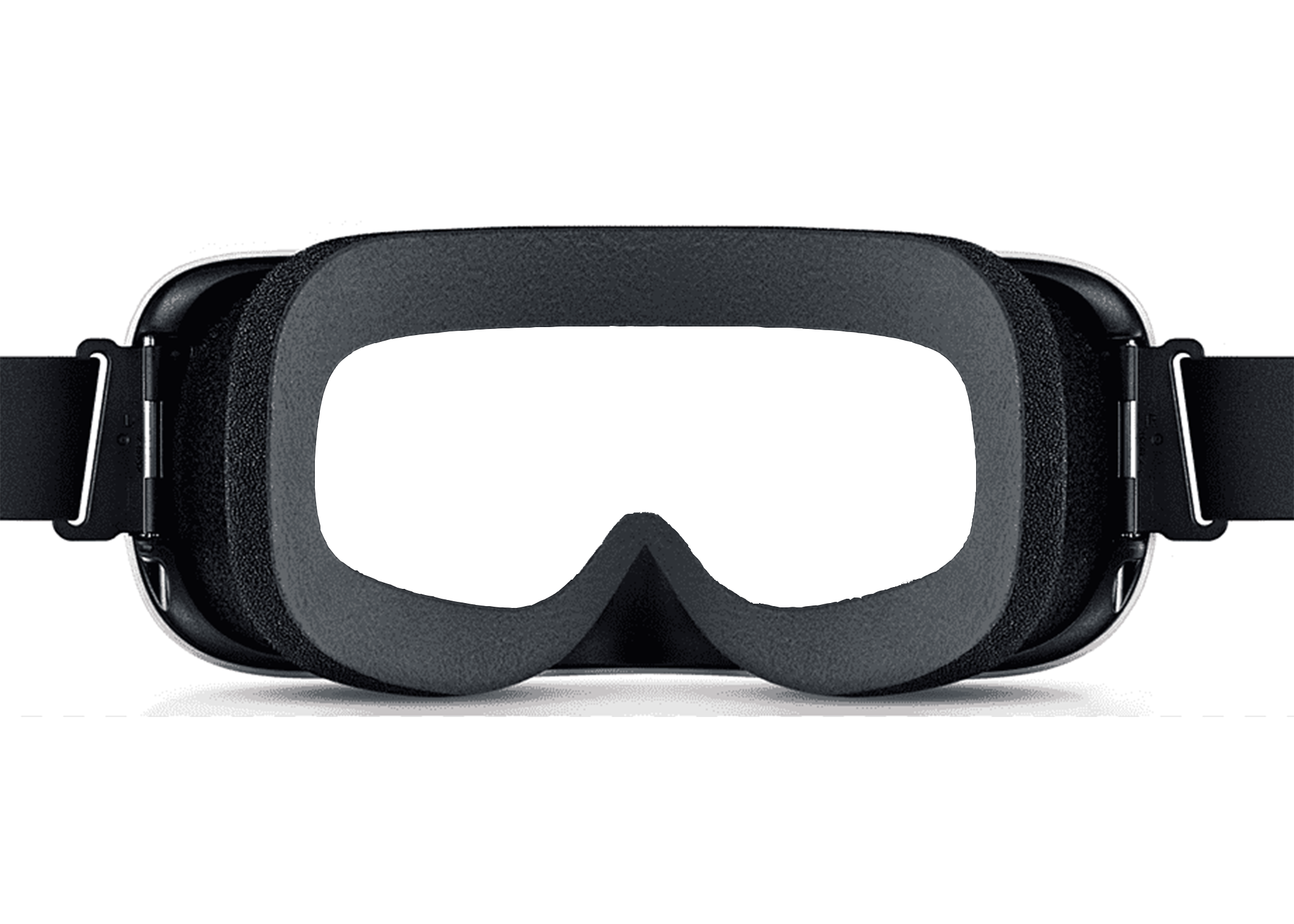The ‘power of a pixel over a molecule’
How virtual reality is changing health care
For chronic-pain survivors, anxiety-ridden children and others, a virtual reality headset can provide greater relief than traditional treatment.
By Nova Blanco-Rico, Madison Hogue, Spartacus Smith, and Todd Takeuchi
Brain fog usually means a lack of focus. For Tom Norris, a retired Air Force lieutenant colonel, it’s a synonym for recurrent pain. He says he lives with a type of brain fog that’s similar to standing next to a jet engine. A turbine-like sensation fills him with pain as it ramps up. An ever-consuming roar builds beneath his breath, unnoticeable to most.
Norris says the sensation overcomes his mind and body, making physical activity a challenge. Overwhelmed, the only thing that helps him is a focused, deep breath, a skill he learned from a VR (virtual reality) headset.
Devices like Apple Vision Pro and Oculus Quest provide immersive experiences tied to games and entertainment, but VR has become a reliable way to manage mental and physical pain such as anxiety, phobias, PTSD and chronic pain, according to a 2023 study from the National Center for Biotechnology Information. In 2022, the global health care augmented and virtual reality market was worth $2.31 billions and is expected to grow to $19.6 billion by 2030.
Matthew Stoudt, CEO of AppliedVR, had a successful career in technology, creating digital platforms for advertising at gas pumps. But in 2014, a friend encouraged him to make a significant change, which guided him towards the use of VR in health care.
“I come across 30 years of clinical and academic history talking about the power of VR,” said Stoudt. “To actually treat a wide variety of disease conditions ranging from schizophrenia, depression, anxiety, PTSD and pain.”
Stoudt was inspired by Hunter Hoffman and David Patterson’s studies that use VR on burn victims going through debridement, which demonstrate VR's effectiveness. Stoudt says “the power of a pixel over a molecule,” i.e. the power of virtual reality environments over drugs like opioids, launched his path.
Sarah Hill, CEO of Healium, is a former TV journalist who became interested in VR by covering trauma. Her journey began when she assisted veterans with virtual tours.
“They weren't just watching these experiences; they were feeling them,” Hill said. “And we teamed up with neurofeedback specialists to discern what is happening to their mind when they're watching these experiences.”
“The content can actually react to your own physiology.”
— Sarah Hill
Discovering that veterans felt better from virtual tours, Hill began testing how it impacted people’s physiology, finding positive reactions to VR. This led her to create Healium, a reactive VR experience for those struggling with their mental health. Healium uses smartwatches, EEG headbands, VR headsets and an app to help users work through problems via an immersive meditative experience.
“And now via the devices connected to our wrists, you have the ability to influence the content [you see],” Hill said.
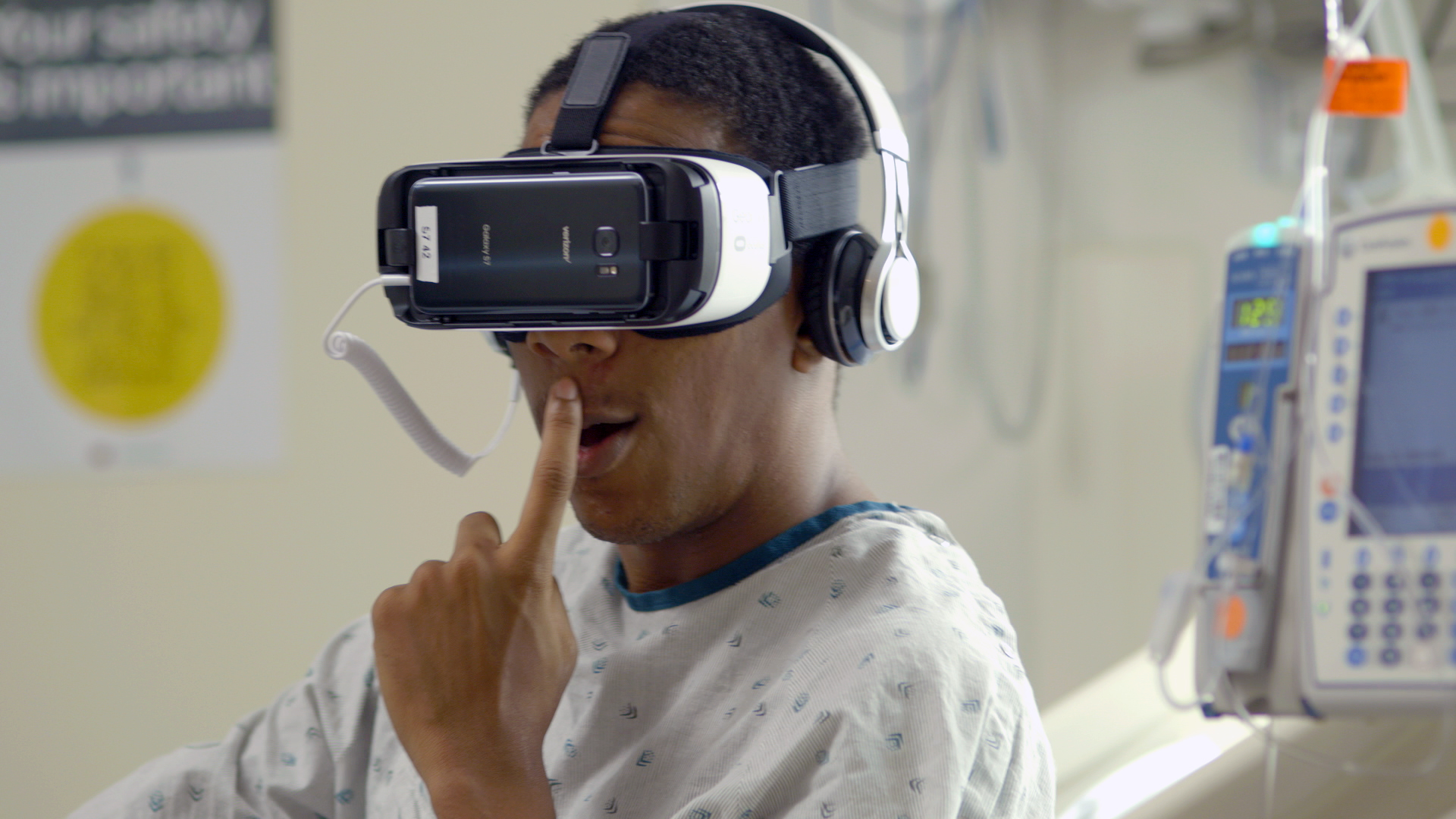
A patient undergoes virtual treatment at Cedars-Sinai in Los Angeles. (handout)

A patient at Cedars-Sinai in Los Angeles undergoes a treatment session. (handout)
VR headsets were scarce in hospitals. Jack Robertson, chief operating officer of KindVR, and his son, Simon Robertson, who founded the company in 2014, wanted to change that.
Simon's first VR application was for pain management to treat children with sickle cell disease. Its mission was to distract little ones with sights of the colorful ocean floor while medical professionals worked on them.
“The kids would be encouraged to look up, keep their torsos flat, and give easy access to the doctors and nurses,” said Robertson. “Each of the procedures we have, we do a clinical study on it… once we know it's safe and effective, we roll it out to our hospitals.”
KindVR is currently used in 70 children's hospitals across the U.S. and Canada, according to Robertson.
“I don't think you could find anything I haven't tried except CBD,” said Tom Norris, 74, who’s been in physical therapy for 37 years. “I've done everything from faith healing, hands-on healing, electric shocks, magnetism, bee honey, bee stings, epidurals, you name it.”
History of pain management remedies
Over thirty years ago, while stationed in Saudi Arabia, he was diagnosed with testicular cancer and received 30 days of in-house radiation treatments. Three years later, due to the treatments, he began suffering chronic pain in his lower body. During his time in the Air Force, military doctors had a hard time pinpointing what caused his pain.
“They tried everything from medications to the one that really got me: I did four 90-day bed rests in four different hospitals,” said Norris.
Norris tried back surgery and all sorts of channels, until one day the military said there was nothing they could do for him and retired him.
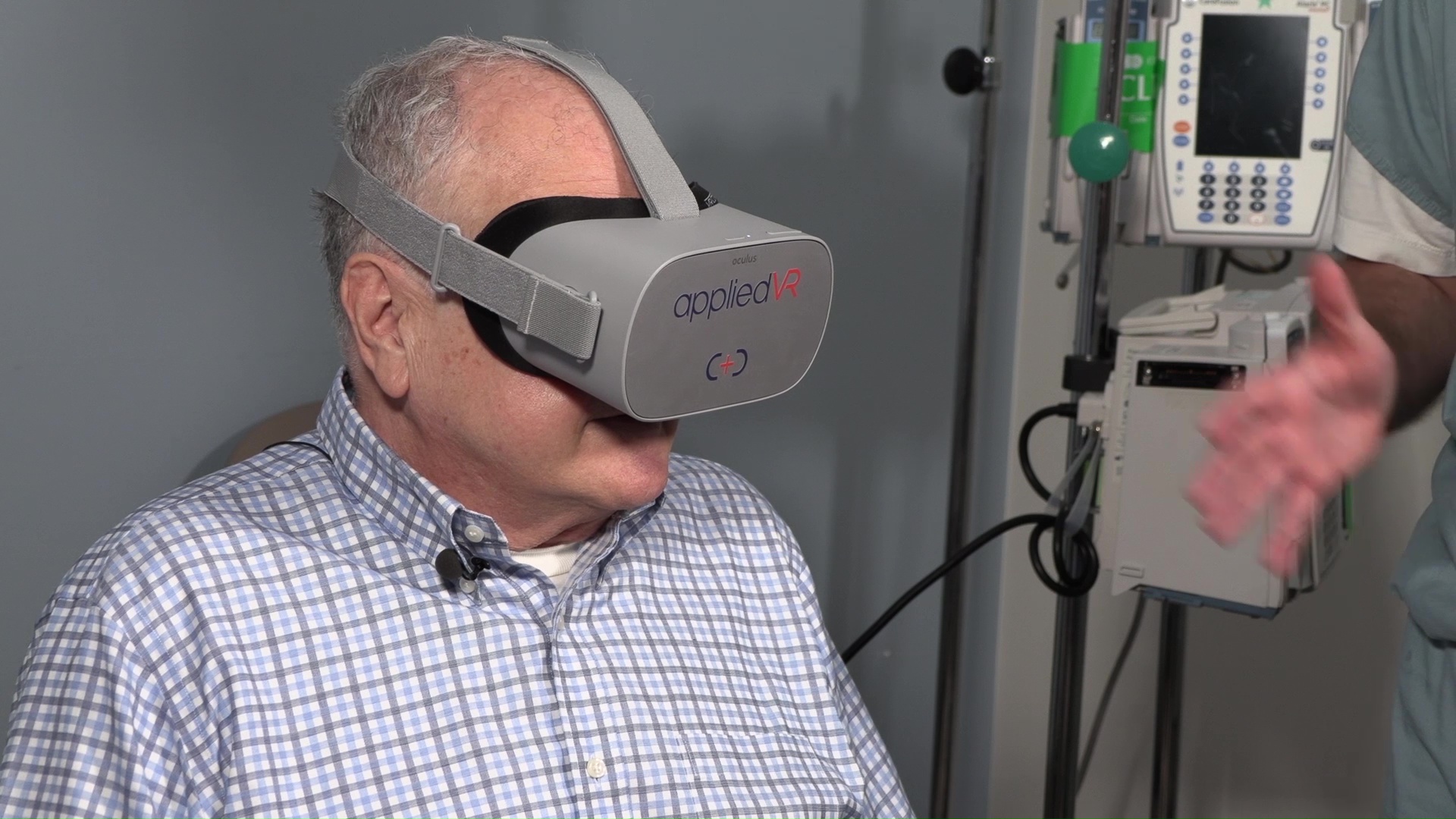
At Cedars-Sinai, Tom Norris is receiving his virtual reality treatment. (handout)
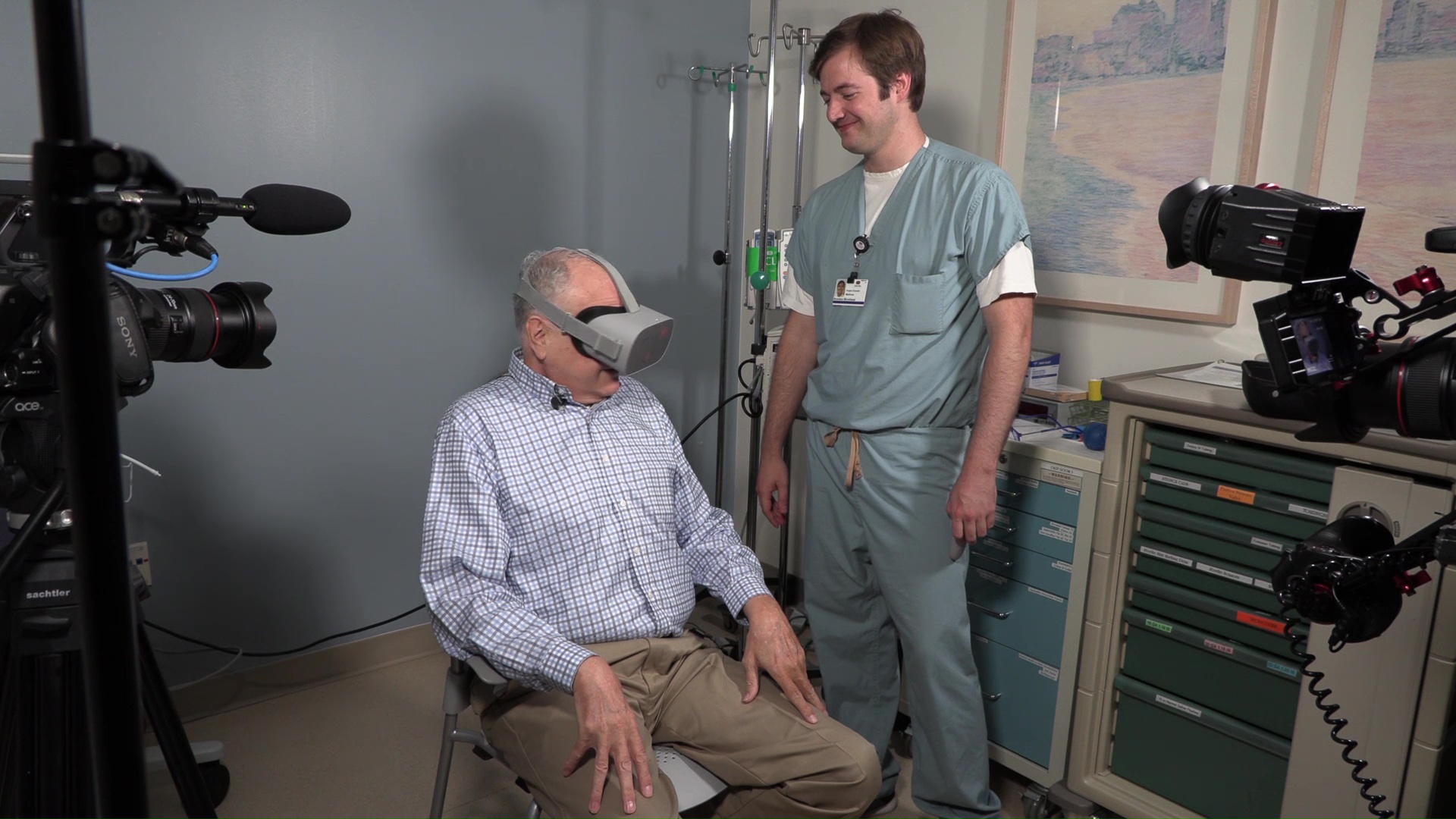
Tom Norris is seen with a nurse who is administering his virtual reality treatment at Cedars-Sinai. (handout)
Extreme treatments are common, but for Deb Shaw, a 61-year-old stroke survivor, VR was her solution.
“It propelled me into a universe that made me forget I had a stroke.”
— Deb Shaw
In December 2016, a night stroke affected Shaw’s right side, limiting the mobility in her arm, hand and her right leg. After, she was hospitalized for six weeks, putting an end to her career at the data center company Net Optics.
Shaw’s coworker at the time told her about the company's virtual reality work. She then reached out to a local company, which later became Penumbra REAL System, that was developing a VR system for health care.
In a walking chair, accompanied by her husband, she put on the headset and was amazed. She stood and raised her arms, achieving mobility that was surprising.
“My husband was like, 'I can't believe this. I've never seen Deb so reactive to such amazing technology,'” said Shaw. “It propelled me into a universe that made me forget I had a stroke.”
In 2011, Norris became a patient advisor on a clinical trial with AppliedVR at Cedars-Sinai Medical Center in Los Angeles, dealing with chronic pain. Meeting Dr. Spiegel, director of Health Services Research, Norris was shown a list of therapies for chronic pain, where he was introduced to a VR trial.
“I took a headset home and went through eight weeks of lessons in like a day, and it stuck,” Norris said.
In a virtual reality setting, patients are able to experience everything from calming techniques to increased joint mobility that would have otherwise been impossible.
For Shaw, she was asked by the engineers what she would like to do every day.
“I said I'd love to be able to cup a bird, and place him back into his nest… and sure enough, they came back with an amazing program,” Shaw said.
After Shaw’s first major stroke, activities were out of the question. But through determination to improve, and attending therapy six days a week, she can do everyday tasks.
Funding a dream into (virtual) reality
The ability to evolve, especially in health care, is costly. It’s a challenge that even the CEOs of virtual reality companies face.
AppliedVR investors include F Prime Capital and Jazz Ventures; and according to Crunchbase, the company has gained a total of $71 million in funding.
The new tech receives millions in funding, but for Stoudt, making the tech accessible to patients through health insurance is just as important to him and investors.
“We don't want this to be for the privileged few, we want this to be for the masses because chronic pain is an epidemic that afflicts the masses,” Stoudt said. “We actually try to drive affordability for the patients that may not be able to afford something like this on their own.”
Healium’s VR therapy is available through a mobile app, called Healium AR, making it accessible to everyday people. It allows users to experience a butterfly landscape to the open sea for relaxation through phones.
By using the app, individuals can do one of two things: gain real-time feedback on their heart rate through a connected smartwatch or monitor brain activity through an EEG headband. The app is free for users, but for about $11 users can access a premium version with more features.
Where do you see virtual reality taking medicine in 20 years?

Tom Norris, chronic pain survivor
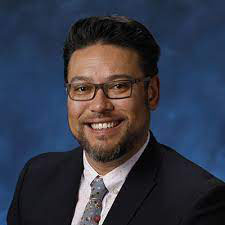
Dr. Warren Wiechmann, UCI Physician and MDEdTech Fellowship Director
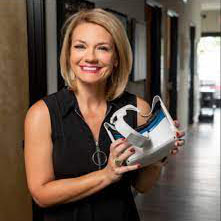
Sarah Hill, Healium CEO

Matthew Stoudt, Applied VR CEO
What’s next in medical VR
Robertson of KindVR hopes that virtual reality will be the standard and continue to alter the care of patients to lessen the trauma of emergency rooms. When conducting a procedure, the hospital could use the KindVR system to lower trauma from patient experience.
“It takes the kids out of that procedural room, puts them in a beautiful place, and their experience of pain and stress goes down significantly,” said Robertson.
Lowering pain and stress extends outside the hospital, impacting those like Norris and Shaw, who have become advocates for the tech.
Norris adds that VR can help with agoraphobia, saying that it “gives you the same kind of thing [as a support group] without the danger you feel.”
For Shaw, facing her challenges virtually helps turn her into a warrior who can create “courageous outcomes.”
“Health care VR truly amplifies all of the therapies,” Shaw said. “Because when I was talking in VR, I was excited. I was laughing.”
Shaw sees virtual reality as the way for other survivors to bring out their inner warriors to begin to conquer their fears and live a better life.
Norris said the journey of VR therapy is akin to a poem he learned from his mother.
“Believe in yourself and in your plan, though impossible things may seem,” he said. “Somehow you'll get through to the goals you have in view. Mountains fall and seas divide for he, who, in his stride, takes a hard pass, sweeping obstacles away. The prizes of life we fail to win because we doubt the power within.”
